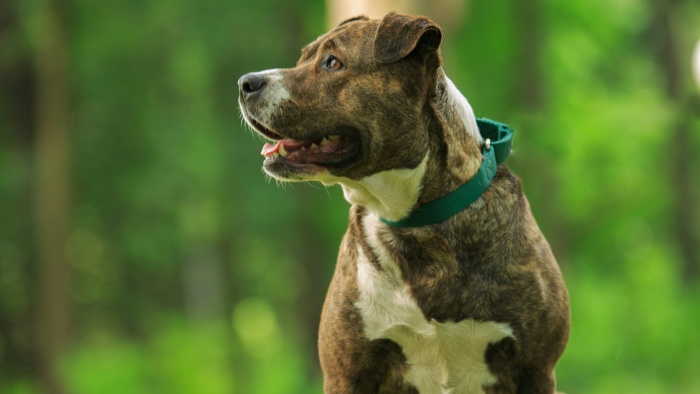Muscular Dogs: How To Build

Is your dog showing signs of aging, injury, or lack of activity? Muscular dogs may benefit significantly from starting a muscle-strengthening regimen.
In evaluating your dog’s well-being, veterinarians consider various factors such as diet, weight, physical shape, and muscle health. The muscular condition is a vital aspect of your dog’s total health.
When dogs experience muscle atrophy, they tend to be weaker, exhibit diminished immune capabilities, and face delayed healing from sickness or wounds. This condition is common in older, injured, or inactive dogs.
To enhance your dog’s muscular health, integrating a muscle-enhancing exercise routine into your dog’s daily activities is advisable. This article will guide you through everything necessary to fortify your dog’s muscular strength.
Reasons to enhance your dog’s muscle structure
Building your dog’s muscles is essential for three primary reasons:
To reinforce aging dogs for better health and to mitigate muscle deterioration
Muscle degradation, known as sarcopenia, naturally occurs as dogs age, distinguished from cachexia, which is muscle loss in the presence of disease. Aging dogs face muscle loss due to decreased activity, weakening joints, and increased inflammation.
According to the American Kennel Club Canine Health Foundation, boosting muscle mass in senior dogs can diminish the risk of injuries, prolong their lifespan, and elevate their overall well-being. Establishing a strength training regimen for senior dogs will increase their muscle volume.
Can elderly dogs develop muscle?
An effective method to build muscle in senior dogs involves a dedicated strength training regimen aimed at minimizing muscle loss. This regimen should consist of:
- daily walks lasting 30 minutes
- swimming for joint-friendly resistance training
- cross-training for a vigorous, enjoyable cardiovascular workout
- interactive activities like fetch, Frisbee, or tug-of-war for playful exercise

How often should you walk a senior dog?
Aiming for a minimum of 30 minutes of walking each day with your senior dog is advisable. However, be attentive to their fatigue signs and adjust the pace accordingly. Regular walks are crucial for maintaining joint mobility and muscle condition.
To recover muscle following an injury, surgery, or sickness
Muscle wasting is a common consequence of injury, surgery, and sickness. Dogs experience muscle loss due to pain, lack of use, and shifting their weight. Additionally, dogs may suffer from cachexia, a type of muscle wasting triggered by diseases such as heart failure, cancer, and chronic renal failure.
Without adequate exercise and nutrition, your dog’s muscles will not regenerate. Introducing a muscle-strengthening regimen can speed up your dog’s recovery and enhance mobility.
Can muscle loss in dogs be restored?
As dogs get older, they naturally experience muscle wasting or loss of muscle tissue, especially in the hind legs, which are more prone to joint pain and arthritis, leading to pain and weakening or wasting of muscle fibers. Fortunately, muscle wasting can often be reversed with proper exercise and nutrition.
What leads to weakness in a dog’s hind legs?
Weakness in a dog’s hind legs can result from:
- Aging
- Injury
- Sickness
- Chronic pain
- Joint pain and arthritis
- Surgical recovery
- Diminished activity
How to assist your dog’s hind legs?
To aid in the reversal of muscle wasting in your dog’s hind legs, patience, consistency, and affection are required. Methods to strengthen their hind legs include:
Leg massages to enhance circulation and alleviate stiffness.
Providing a high-quality diet and supplements aimed at muscle and joint health. Opt for foods, treats, and supplements rich in Omega-3 fatty acids to combat inflammation and joint discomfort.
Engage in gentle, regular exercise with your dog, ensuring you pace it according to your capability.
To boost your service dogs’ performance capabilities
Dogs serve in various roles, aiding humans in activities such as hunting, herding, retrieving, guarding, and executing specialized tasks as service or police dogs. Enhancing muscle mass is crucial for these dogs to excel in their respective duties.
Many owners seek ways to strengthen their dogs for peak performance. Achieving this goal requires patience, time, and steadfast dedication. However, the investment in your dog’s physical training will yield significant benefits.
Superior muscle fitness enhances flexibility, balance, speed, awareness, mobility, and strength, while also minimizing fatigue and the risk of injuries.
Should service dogs undergo a canine weight training regimen?
While it’s not advisable for dogs to engage in weight lifting as humans do, resistance training can significantly contribute to muscle development. To incorporate resistance training for your dog, consider:
- having your dog walk wearing a weighted vest
- using a weighted harness for pulling exercises
- encouraging swimming for full-body engagement
These resistance activities are designed to fortify your dog’s muscles. It’s also essential to allocate rest days for muscle recovery. Alongside muscle building, cardiovascular exercises play a crucial role in maintaining overall health.
Don’t fret over muscle development in puppies
Puppies, defined as dogs under two years of age, naturally grow at varying rates and typically engage in sufficient self-exercise.
Hence, a muscle-building regimen is not recommended for puppies due to potential adverse effects on their growth and overall development.
Breeds predisposed to easier muscle gain
Certain dog breeds have a natural propensity for quicker muscle development compared to others:
- American Staffordshire Terrier
- Doberman Pinscher
- Rottweilers
- Boxers
- American Pit Bull Terrier
- Dogo Argentino
- Puppies benefit from innate muscle growth due to Myostatin.
- American Bully
- Greyhounds
These breeds are known for their significant muscular stature, contributing to their athletic or working dog classification. Specifically, owners of Pit Bulls often inquire about enhancing their dog’s muscular physique. However, there’s no need for a breed-specific muscle enhancement program to achieve a well-built Pit Bull.

How to evaluate your dog’s muscle status
Visiting your vet is the most straightforward method to assess your dog’s muscle health. Veterinarians have the expertise to inspect muscle conditions and decide if your dog requires muscle strengthening.
Is my dog overweight or muscular?
After mastering the technique to appraise your dog’s muscle condition, you’ll be able to discern whether your dog is overweight or muscular. Obese dogs possess a body composition characterized by:
- noticeable abdominal expansion.
- significant fat deposits over the chest, spine, and base of the tail.
- absence of visible waist and abdominal tuck.
- fat accumulation around the neck and limbs.
- Conversely, muscular, well-conditioned dogs display a distinct body structure. If your dog is in shape, you’ll notice:
- ribs, hip bones, and vertebrae are palpable with minimal fat coverage.
- a clearly defined waist that narrows from the ribs.
- an abdominal tuck that is evident from the side view.
How to enhance muscle mass in dogs
To effectively increase muscle mass in dogs, attention must be paid to three critical aspects: a balanced diet, targeted strength training exercises, and sufficient rest for recovery. Here’s a guide to bolstering your dog’s muscle health:
Diet
Providing your dog with a high-protein diet is essential. Research from The National Library of Medicine indicates that dogs fed a diet containing 12% protein experienced notable growth in lean body mass. Diets low in protein and high in corn gluten fail to supply the necessary amino acids for muscle development. Nutritional supplements can further enhance your dog’s diet.
Pro tips:
Initiate a quality nutritional regimen six to eight weeks prior to starting training.
Elderly dogs require a diet higher in protein and lower in fat to support muscle protein synthesis.
What to feed your dog for muscle gain
Before introducing new foods aimed at muscle gain, consulting with your vet to tailor a diet specific to your dog’s breed is advisable. To support muscle development, consider incorporating:
- Increased protein sources like chicken or beef
- Omega Fatty Acid Supplements
- Antioxidants
Elevating protein intake in your dog’s diet facilitates muscle growth during exercise.

Is creatine safe for dogs?
Creatine, a popular muscle-building supplement among humans, lacks definitive research regarding its safety and efficacy in dogs. Until more conclusive studies are available, it’s advisable to avoid giving your dog creatine.
Are raw eggs beneficial for dogs?
While cooked eggs are an excellent source of vitamins, minerals, proteins, and fatty acids for muscle building, raw eggs are not recommended due to potential Salmonella risk and lack of additional benefits. Cooking eggs is the safer option for your dog.
Exercise
Incorporating strength training into your dog’s daily activities is crucial. Begin with gentle exercises and progressively enhance the intensity and duration of the workouts. Also, ensure your dog stays well-hydrated by providing plenty of water.
A comprehensive strength training regimen includes both aerobic and resistance exercises. Aim for two sessions daily, ranging from 15 to 60 minutes. Effective muscle-building activities for dogs encompass:
-
-
- Weight Vest Workouts
- Weight Pulling and Dragging
- Swimming
- Treadmill Running or Outdoor Running
- Spring Pole Workouts
-
Initiate each session with a warm-up period of five to ten minutes through walking or light jogging. Older dogs may require an extended warm-up period. To eliminate toxins, conclude exercises with a cool-down period of five to ten minutes, transitioning from jogging to walking.
Rest
Post-exercise, it’s essential to allow your dog ample rest and recovery time. Dogs typically need 12-14 hours of sleep per day, accounting for about 50% of their time. With only about 20% of their day needed for activity, the remainder should be dedicated to rest and relaxation.
Muscle development can enhance your dog’s well-being
For elderly, recuperating, or industrious dogs, integrating a strength training regimen into their exercise plan offers numerous advantages.
Balancing this with a diet rich in protein and ensuring ample rest is key to improving your dog’s muscle health, contributing to a more extended and healthier life.
Conclusion
The journey towards fostering muscular dogs encompasses a comprehensive approach that melds a protein-enriched diet, tailored strength training exercises, and adequate rest.
This holistic strategy not only promotes muscle development but also significantly boosts the overall health and longevity of dogs, regardless of their age or activity level.
By dedicating time and effort to enhance your dog’s muscular health, you are investing in their quality of life, ensuring they remain strong, agile, and resilient against the challenges of aging, recovery, or demanding workloads.
Remember, the key to achieving and maintaining peak muscular condition in dogs lies in a balanced and consistent routine, underscored by the guidance of veterinary professionals.
FAQs
Can all dog breeds benefit from muscle-strengthening exercises?
While all dogs can benefit from appropriate levels of exercise, the intensity and type of muscle-strengthening exercises should be tailored to the individual breed’s capabilities and health status. Some breeds may require more rigorous routines, while others may need gentle, low-impact exercises.
How do I know if my dog is getting enough protein in their diet?
Monitoring your dog’s energy levels, muscle tone, and overall health can indicate if their diet meets their protein needs. For a precise evaluation, consult with a veterinarian who can recommend a diet plan based on your dog’s age, breed, and activity level.
What are the signs of overexertion in dogs during muscle-building activities?
Signs of overexertion include excessive panting, lethargy, reluctance to continue exercising, limping, or any signs of discomfort. It’s crucial to monitor your dog closely during exercise and adjust the intensity accordingly.
Are supplements necessary for building my dog’s muscle mass?
While a balanced diet is crucial, supplements can be beneficial in some cases, especially for older dogs or those with specific nutritional needs. Always consult a veterinarian before introducing any supplements to your dog’s diet.
How long does it take to see improvements in my dog’s muscle condition?
Improvements in muscle condition depend on various factors, including the dog’s initial health status, age, and the consistency of the exercise and diet regimen. Generally, noticeable improvements may take several weeks to a few months of consistent effort.

